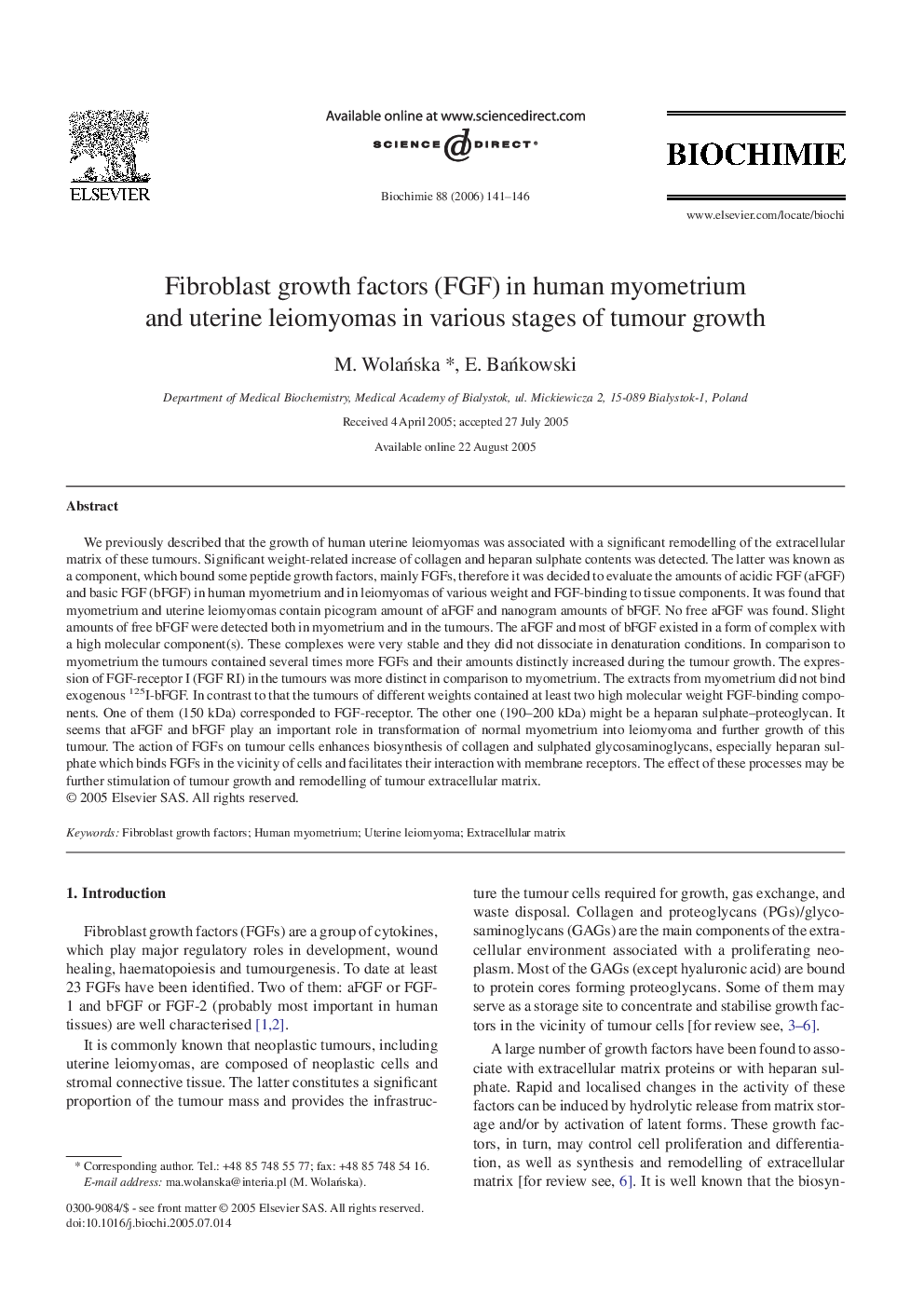| Article ID | Journal | Published Year | Pages | File Type |
|---|---|---|---|---|
| 1953399 | Biochimie | 2006 | 6 Pages |
We previously described that the growth of human uterine leiomyomas was associated with a significant remodelling of the extracellular matrix of these tumours. Significant weight-related increase of collagen and heparan sulphate contents was detected. The latter was known as a component, which bound some peptide growth factors, mainly FGFs, therefore it was decided to evaluate the amounts of acidic FGF (aFGF) and basic FGF (bFGF) in human myometrium and in leiomyomas of various weight and FGF-binding to tissue components. It was found that myometrium and uterine leiomyomas contain picogram amount of aFGF and nanogram amounts of bFGF. No free aFGF was found. Slight amounts of free bFGF were detected both in myometrium and in the tumours. The aFGF and most of bFGF existed in a form of complex with a high molecular component(s). These complexes were very stable and they did not dissociate in denaturation conditions. In comparison to myometrium the tumours contained several times more FGFs and their amounts distinctly increased during the tumour growth. The expression of FGF-receptor I (FGF RI) in the tumours was more distinct in comparison to myometrium. The extracts from myometrium did not bind exogenous 125I-bFGF. In contrast to that the tumours of different weights contained at least two high molecular weight FGF-binding components. One of them (150 kDa) corresponded to FGF-receptor. The other one (190–200 kDa) might be a heparan sulphate–proteoglycan. It seems that aFGF and bFGF play an important role in transformation of normal myometrium into leiomyoma and further growth of this tumour. The action of FGFs on tumour cells enhances biosynthesis of collagen and sulphated glycosaminoglycans, especially heparan sulphate which binds FGFs in the vicinity of cells and facilitates their interaction with membrane receptors. The effect of these processes may be further stimulation of tumour growth and remodelling of tumour extracellular matrix.
